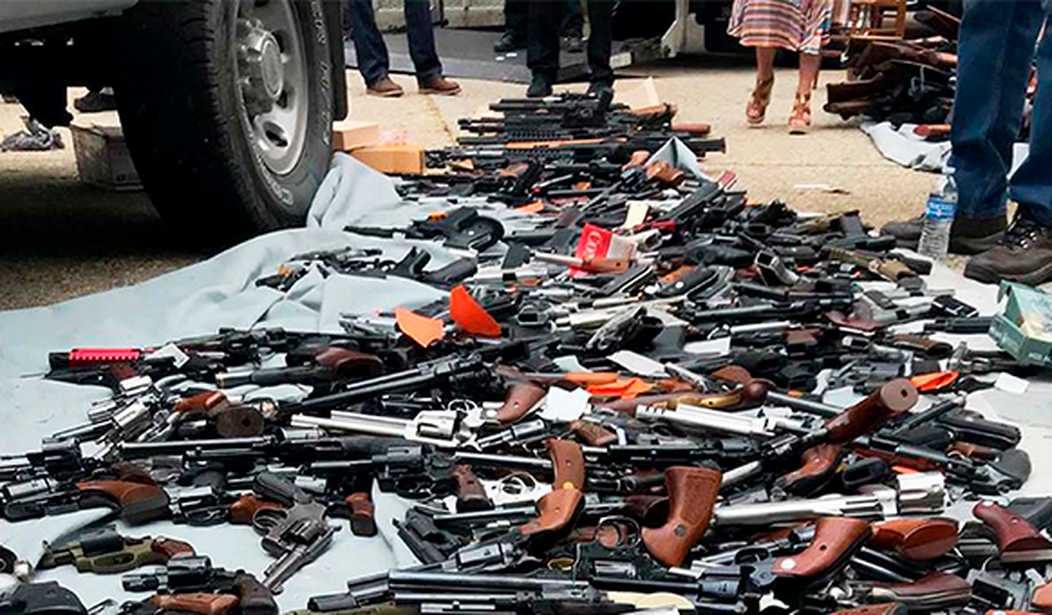Compared to many people I know, my collection of firearms is pretty modest. It’s enough for the media to freak out over if the police were to raid my house, of course, but not nearly as many as some folks I know.
The thing is, most of us have various guns for specific reasons. Now, sometimes those reasons are “it’s cool and I like it,” but they’re still reasons.
However, it seems a recent study coined a new term we’re all likely to hear soon enough on the lips of every anti-gunner we encounter.
Amazingly, a new “study” is making headlines, despite the fact that it relies on obviously faulty assumptions, irrational methodology and has not been peer-reviewed.
The authors cite themselves as support for spurious statements like “Surges in firearm purchasing…have been well documented in association with mass shootings and significant political events and are followed by population-level increases in firearm violence.” Crime data for the most recent months isn’t available yet, but we know history proves otherwise.
Sure, Americans tend to buy more of something they think will soon be scarce. Just as there was an increase in toilet paper buying during the early days of the COVID-19 pandemic, adults are more likely to legally purchase a certain firearm they have been thinking about when there is a political discussion of banning that firearm. Does that mean those purchases are, as the author argues, “excess” firearms?
Any chef will tell you they require different types of knives for different kitchen tasks. Any hunter will tell you they would not rely on the same firearm for self-defense as they would in the field. All guns are not the same and do not meet the same needs for law-abiding citizens that choose to exercise their Constitutional rights to keep and bear arms. The difference is, although there are more homicides each year committed with knives than with Modern Sporting Rifles, no one seems to argue seriously against owning any knives or for limiting the number that a home may possess because more than one is excessive.
Precisely.
Different firearms have different purposes. For example, you may have a .30-06 for deer hunting, but .338 Lapua for long-range shooting. You might also have a .22 LR for hunting squirrels or rabbits and a 12-gauge semi-auto for ducks as well as an AR-15 for home defense, a handgun for day-to-day carry, and any number of other guns for any other reason you care to conjure.
Guns fit different roles in our lives, up to including just outright affection. How many people bought .44 Magnums just because Dirty Harry had one? I’m not going to lie; a Walther PPK is on my list for a someday purchase simply because James Bond used it.
Yet does that make them “excess?”
The author of this takedown of the study, Elizabeth McGuigan from the NSSF, adds:
The gymnastics used by the authors to determine what is considered “excess purchases” could alone take an entire study to critique. But picking apart their process would mean accepting that the premise is sound. Which it simply is not. There is no such thing as “excess purchases.” There is supply and there is demand. There are legal, heavily regulated sales. There are law-abiding adults possessing and using firearms in compliance with federal, state and local laws. To assert that there have been “excess purchases” of over 2 million firearms is a thinly veiled, deeply biased assertion that there is something inherently wrong with the legal purchase of a firearm. With this in mind, the model doesn’t matter. This study comes down to a simple equation: garbage in, garbage out. In fact, the authors recognize that there is no evidence to show these legally purchased firearms have been used in any crimes.
However, we’re going to start seeing guns referred to as “excess firearms” or “excess guns” very soon, I’m quite sure. That despite the fact that it’s a completely BS term.
So, dig in. We’re about to have more stupid to deal with.







Join the conversation as a VIP Member